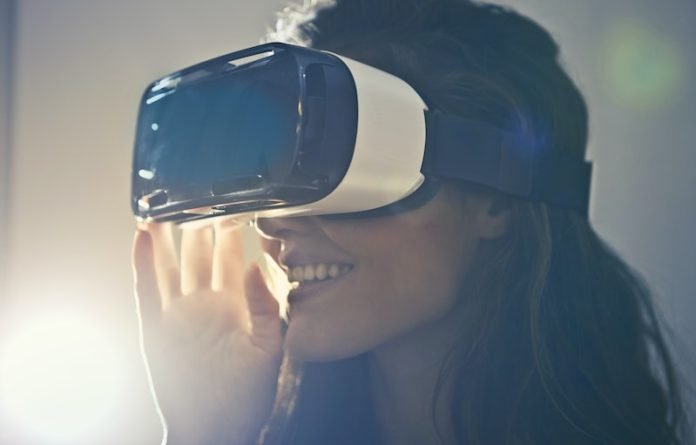
In the realm of virtual reality (VR), users can completely transform the appearances of themselves as avatars and of their digital environments, all at the mere click of a button.
In a pioneering new study, Stanford University researchers have examined how this unique and profound ability significantly impacts social interactions in the metaverse – the term for immersive virtual worlds, experienced through VR headsets, where people are increasingly gathering to play and work.
When participants were in “outdoor” VR environments surrounded by “nature” they reported the experience was more restorative and provided greater enjoyment than when they were in “indoor” VR environments.
“In the metaverse, you can be anyone or anywhere,” says study lead author Eugy Han, a PhD student in communication who is advised by Jeremy Bailenson, the Thomas More Storke Professor in the School of Humanities and Sciences at Stanford University.
“Our ongoing work reported in this study is showing who you are and where you are matters tremendously for learning, collaborating, socializing, and other metaverse activities.”
The study, published in the Journal of Computer-Mediated Communication, is the latest to come out of Stanford University’s innovative Virtual People course.
Taught by Bailenson and colleagues, the course is among the first and largest ever conducted mostly in VR.
For the study, 272 students used VR headsets to meet in virtual environments for 30 minutes once a week over eight weeks.
During those sessions, the students participated in two experiments, accumulating hundreds of thousands of minutes of interactions for researchers to analyze.
Real benefits from virtual environments
One experiment assessed the effects of where the students were, across a range of digital surroundings.
The other experiment assessed the effects of who the students were, via how they presented themselves as avatars.
In the experiment focused on virtual settings, students interacted in constrained or spacious virtual environments, both indoors and outdoors.
The researchers created 192 unique environments with these varying attributes, from tight train cars to vast enclosed arenas and from walled gardens to endless fields.
When in wide open virtual spaces, whether in- or outdoors, the students exhibited greater non-verbal synchrony and reported increases in many positive measures such as group cohesion, pleasure, arousal, presence, and enjoyment, versus when the students interacted in constrained surroundings.
The study also showed that outdoor environments with elements of nature generated more positive feelings independent of the apparent size of the virtual space.
“Where you are in the metaverse can have a major impact on your experience and the shared experience of a group,” says Han.
“Large, open, panoramic spaces for people to move around in really helped with group behavior.”
The findings accordingly suggest that people can take advantage of the available grandness of VR by opting for big, outdoor environments instead of recreating cramped meeting rooms or lecture halls.
“At the very core of collaboration is people attending and reacting to one another in a productive manner,” says Bailenson, “and our data show that all these great downstream things happen when you make your virtual rooms huge compared to a traditional office space.”
Sense of self in VR
In the other experiment, students virtually interacted with each other either as self-avatars, which resembled the students’ actual, physical-world appearances, or as generic avatars that all looked and dressed alike.
The researchers observed the students’ VR behaviors and the students reported on their feelings of measures such as group cohesion, presence, enjoyment, and realism.
The study found that when represented by avatars that looked like themselves, the students displayed more non-verbal synchrony, meaning they gestured and postured similarly to one another.
Dovetailing with these observations, the students reported feeling more “in sync” with themselves and each other when congregating as self-avatars.
When represented as generic avatars and thus “not themselves” virtually, the students reported the experience to be entertainingly freeing.
“People enjoyed being in generic avatars stripped of all identity,” says Han. “On the other hand, when represented by self-avatars, the students reported feeling more active and engaged.”
Real impacts, virtual locations, and avatars
A key takeaway from these results is that for more productive and collaborative interactions – for instance for workplace or professional purposes – self-avatars are the preferred option.
“When you’re getting serious in the metaverse, you want to look like you,” says Bailenson, the founding director of Stanford’s Virtual Human Interaction Lab (VHIL) and also a study co-author.
Importantly, the two experiments found that the reported benefits of interacting virtually as certain avatars and in certain environments grew over time.
Bailenson says those findings suggest the effects are enduring and not just isolated, positive VR experiences.
The study also demonstrates the potential for VR as a novel and insightful medium for conducting psychological studies, given its unlimited digital possibilities and low costs compared to physical-world alternatives.
“In the history of social science, there are very few studies on the psychological effect of huge indoor spaces, for the obvious reason that it is, for example, very expensive to rent out Madison Square Garden to run a four-person meeting,” says Bailenson.
“But in VR, the cost goes away, and one of the more compelling findings from our study is that huge indoor spaces have much of the same redeeming psychological value of being outdoors.”
Written by Adam Hadhazy.



